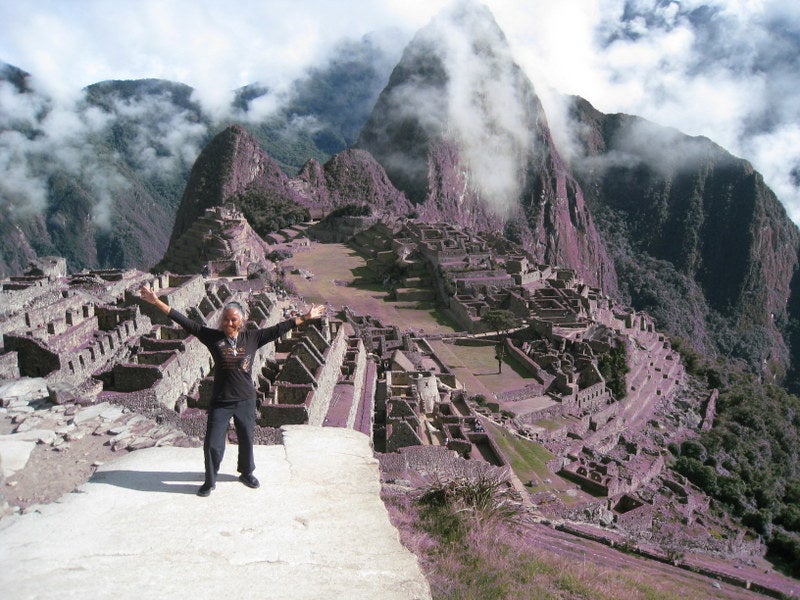
If Black girls didn’t feel like they belonged in the travel space before, they may likely feel a sense of belonging now. We’re seeing more melanin than ever as Black women live their best lives abroad, whether through solo travel, girls trips or baecations. Black travel, in general, is now so pervasive that in 2023, the Black Travel Summit declared Nov. 11 National Black Travel Day. Also, in 2019, Black Americans spent an estimated $109 billion on leisure travel, accounting for around 13% of all travelers.
Black female travel, specifically, can be traced as far back as the 1800s when Mary Seacole, a Black businesswoman and nurse, traveled the world and documented her adventures in her 200-page autobiography Wonderful Adventures of Mrs. Seacole in Many Lands. Nevertheless, our journeys haven’t always been well documented or publicized. That is, until Elaine Lee shone a light on our experiences. Her 1997 work, Go Girl! The Black Woman’s Book of Travel and Adventure, is the first book by and for African American women that seamlessly interweaves 52 travel stories by prolific Black women including Maya Angelou, Gwendolyn Brooks, Audre Lorde, Jill Nelson, Alice Walker and Pearl Cleage.
The book made Black travel tangible, helping Black women feel included in a space we often didn’t have access to and breaking open the endless possibilities when it comes to places to go and things to see in the world around us.
Almost three decades since its debut, Lee is set to release an expanded, updated and revised edition of the book: Go Girl 2: The Black Woman’s Book of Travel and Adventure. Readers can anticipate 54 travel tales, poems, and photos in this jewel. Lee also introduces a new generation of travel writers such as Lola Akinmade Åkerström, Lebawit Lily Girma, Georgina Lawton, Martinque Lewis, Rue Mapp, and Noo Saro-Wiwa, among others.
“What I’ve brought in Go Girl 2 is the voice of a new generation of travel writers and travelers,” Lee tells ESSENCE. “So many of them are gen xers and millennials. And they’ve had a different experience with the world than the women who wrote 30 years ago.”
Lee, who has been a globetrotter for over 30 years, is in a good position to discuss those changes. One of the most evident shifts she has noticed is representation of Black women in travel. When Lee began traveling in the 90s, there wasn’t much–if any–representation, which also created fear around seeing the world.
“For me when I started my first trip around the world, there were no Black travel books,” Lee says. “I had never met a Black woman who traveled around the world, never seen any images of Black women navigating the planet alone. And it was terrifying for me.”
The lack of representation propelled Lee to create something she hadn’t yet seen and pave the way for other Black women.

“Since then, I’ve gotten thousands of letters from Black women thanking me for giving them that courage to see the world and providing that inspiration as well as practical tips on how to see it,” Lee says.
Two other distinct aspects of travel Lee has seen evolve over the years include the rise of social media and use of technology. Both have created ease for travelers and in many ways, made going on grand adventures, and finding community when doing so, both easier and safer to do.
While planning a trip to Peru, Lee posted in Black Travel Movement, a hub for Black travelers on social media, asking different questions about the South American country. Within hours, people provided her with a wealth of information.“So I got a chance to be a part of and explore a whole Black community in Peru that I never really knew existed,” she says.
She also adds that she’s been able to travel lighter thanks to technological advancements over the past few decades. Lee no longer needs to move about with her traveler checks, address book, guide book, camera, cassette player or mail books to her destinations in advance.
“With my first trip around the world, I couldn’t carry all those travel books to the eight countries I was going to. So I had to mail the last four books to an American Express store in Switzerland so that I wouldn’t have to carry all of them, but I could pick them up along the way. How times have changed,” she reminisces.
In her new book, Lee continues telling the unique stories of Black women, going beyond surface level narrations and experiences. As a groundbreaking Black travel writer, she says being a good journeyer is about learning to be a traveler versus a tourist.
“How I do that is [to] immerse myself in a culture. Take the time to learn about where I’m going and learn a little bit of the language, learn money, learn to dress and not try to be a chameleon per se, but to be respectful of a culture,” she explains. “And as a result, people welcome you into it, and then you learn from befriending the locals and being a part of a community.”
Travel lovers or people who live vicariously through brave explorers can read an array of rich stories in the upcoming book. Lee’s primary goal with this work is to again amplify more Black women’s voices.
“In reality, where are you going to hear it other than in ESSENCE?” Lee asks. “There’s no place for the Black woman traveler’s voice to be heard. And so I have tried to create a forum that is enlightening and encouraging to learn about what Black women are doing and how they’re navigating mother earth.”
Go Girl 2 will be available in print and digitally via ugogurl.com and Amazon on April 6.